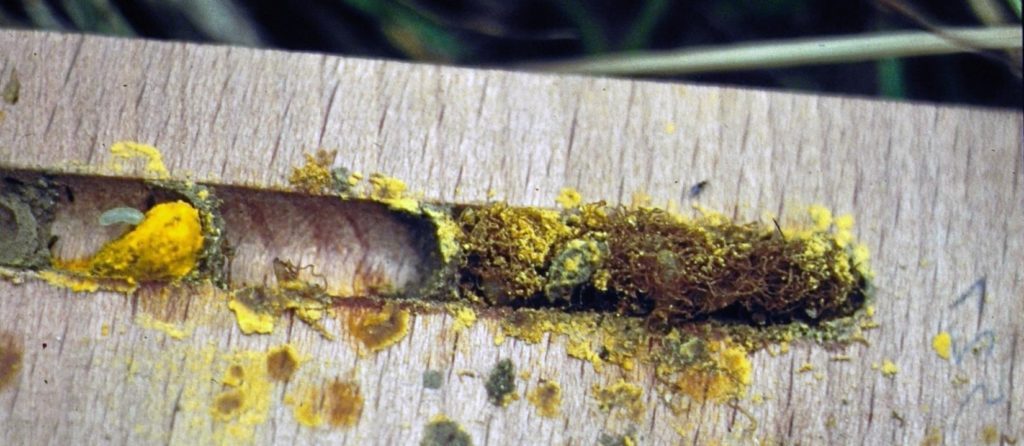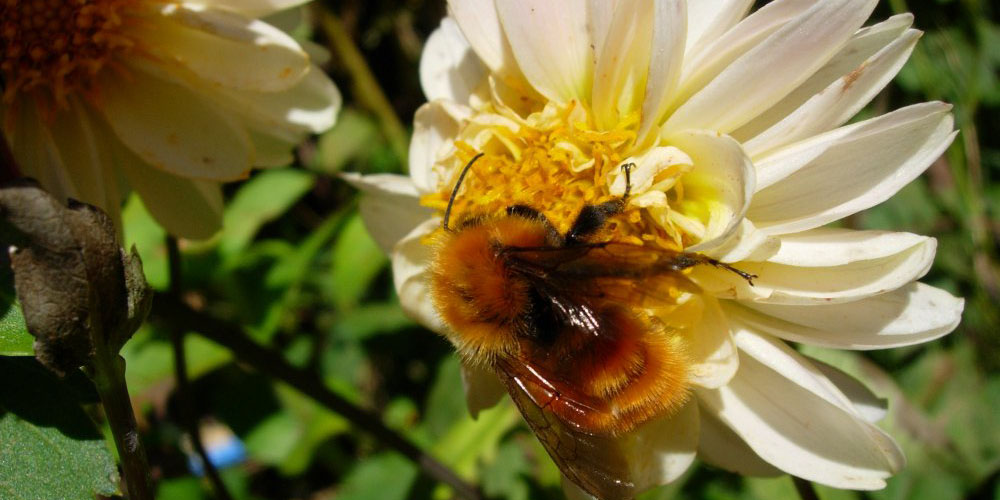The meaning of life, one of my professors at the university said, is to maintain yourself alive and to procreate. This may seem simplistic and against all what I usually write in this blog. And definitely not as surprising and puzzling as “42”. However, it came to my mind while reading a very exciting paper on nest choice in solitary bees. Why this is exciting? Well, because it goes further than simply deciding on a hole in a nest block. It includes cognition, conservation, and, yes, the meaning of life. Let me explain.
Learning beyond foraging
In the past years, we learned a lot about the amazing abilities bees have. Yet, most studies deal with the aspect of how bees find and recognize food sources. How they chose places for their nests remains mostly unknown. Tom Seeley’s book Honeybee Democracy is outstanding in this area. But we don’t know much about other species than honey bees, especially in solitary bees. By focussing on foraging behaviour, however, we’re dealing mostly with one part of the meaning of life – maintaining yourself. You need to eat to survive, to be healthy etc. Food, obviously, is also important for reproduction: if you don’t get enough nutrients, your fertility won’t be at its best.
So, let’s assume our bees have enough access to flowers providing all the nutrients they need. They begin to look for a place where to build a nest. This means the spot itself and safe access to the nesting materials etc. Olli Loukola and his co-authors now studied a certain aspect of this nest choice: mason bees (Osmia species) like to nest in “bee hotels” and several species have similar requests. The red mason bee (Osmia bicornis) nests earlier than two other species, the blue mason bee (O. caerulescens) and the red-vented mason bee (O. leiana). Parasites that infest the nests of red mason bees, however, may also enter in the nests of the other two species.
Nest choice – without parasites, please
The two later flying species now have the chance to “learn from the successful” as the authors put it. Blue and red-vented mason bee females chose nest sites with healthy red mason bee nests. The question was if they’re able to recognize that. The researchers chose a set-up my professor would have called “elegant”. They simulated parasites in red mason bee nests by drilling small holes in the nest plug. Some parasites, like Cacoxenus indagator from the photo above, make such holes when they hatch from their host’s nest.
In addition, they paired this with geometric symbols around the nest entrances. This is a common set-up in learning experiments: you create an association between a relevant (the little holes) and an irrelevant cue (the geometric forms). Later, you change the pairing. By this, you can test if the bees recognize the parasitized nests or just prefer a certain pattern. Without going too much into details: the bees avoided to build their nests at sites where parasites were active. They “learned from the successful” by observing where apparently healthy offspring from another species grew up.
Beyond the simple nest choice – insect cognition
The results by themselves are already interesting, but maybe mainly for bee nerds like me. However, these findings give indications for several other fields with practical relevance. For instance, bee hotels are pretty common in gardens. I always say that these are a tool for learning about bees but don’t really serve conservation. Mainly because most of them attract only a few species. Knowing more about the nest choice of other cavity-nesting bee species could improve the conservation aspect.
My excitement about this paper, however, had completely other reasons. It’s because of the cognitive aspects of the results. Insects are often considered little automats following a fixed behavioural program. We already have data on the abilities of honey bees and bumblebees have. To learn that solitary bees are at a similar level – for me that’s totally amazing.
Think about it: the blue and red-vented mason bees “knew” what information was relevant for their nest choice. They used a strategy: copying successful nest choice of another species, the red mason bee. This is far from trivial. There’s another argument against the perception of insects as little automats: not all blue or red-vented mason bees avoided the sites with parasites. 38% ignored the cue indicating them. Are these 38% dumb bees? No, they just used a different strategy. They found a place with already established nests, which means that it was suitable for nesting.
Back to the meaning of life
There may be parasites at this site, but maybe the alternatives were worse. There may not be free cavities, they were too humid or too far away from suitable flowers to provide the nest. Sometimes you have to take risks in life, also when you’re a bee. There’s more to these decisions than yes or no to parasites.
Which brings me back to my university professor. This example of nest choice in solitary bees, in my opinion, shows how many variations are possible when you think about surviving or reproducing. It also shows that we have to consider more than just one single aspect when we talk about “saving the bees”. Flowers are important, but not the only factor for stable bee populations. They need nesting sites, nest building material etc.
We have to keep these variations in answering the “maintain yourself and procreate” question in mind when creating bee habitat. Diversity counts, for pollinators, for flowers, for conservation – and also for the meaning of life.




Hi Claudia, I have had 15 species of sol bee using my summer unit and nest boxes plus about 11 solitary wasps. O. Cornuta may well be next to use it. In all years I’ve been tending bees I have never ever found Monos in blue or orange vented bees. Pteromalus and melittobias . Yes. Monos adapted to seek out and parasitise red masons who are earlier than other two. Have you ever found monos in non red masons? I would be very interested if you have. All of which are easily seen with my nest boxes. Nice article thanks for translating it in common people language.!! Cheers George
Hi George, thank you for your feedback. Yes, I’ve seen Monodontomerus also in nests of blue mason bees. They’re not that specialized on a single species, but can parasitize different mason bee species. That they can do it doesn’t mean that you will always find them also in other mason bee species, though. There are several factors also for a parasite to make him chose their host.